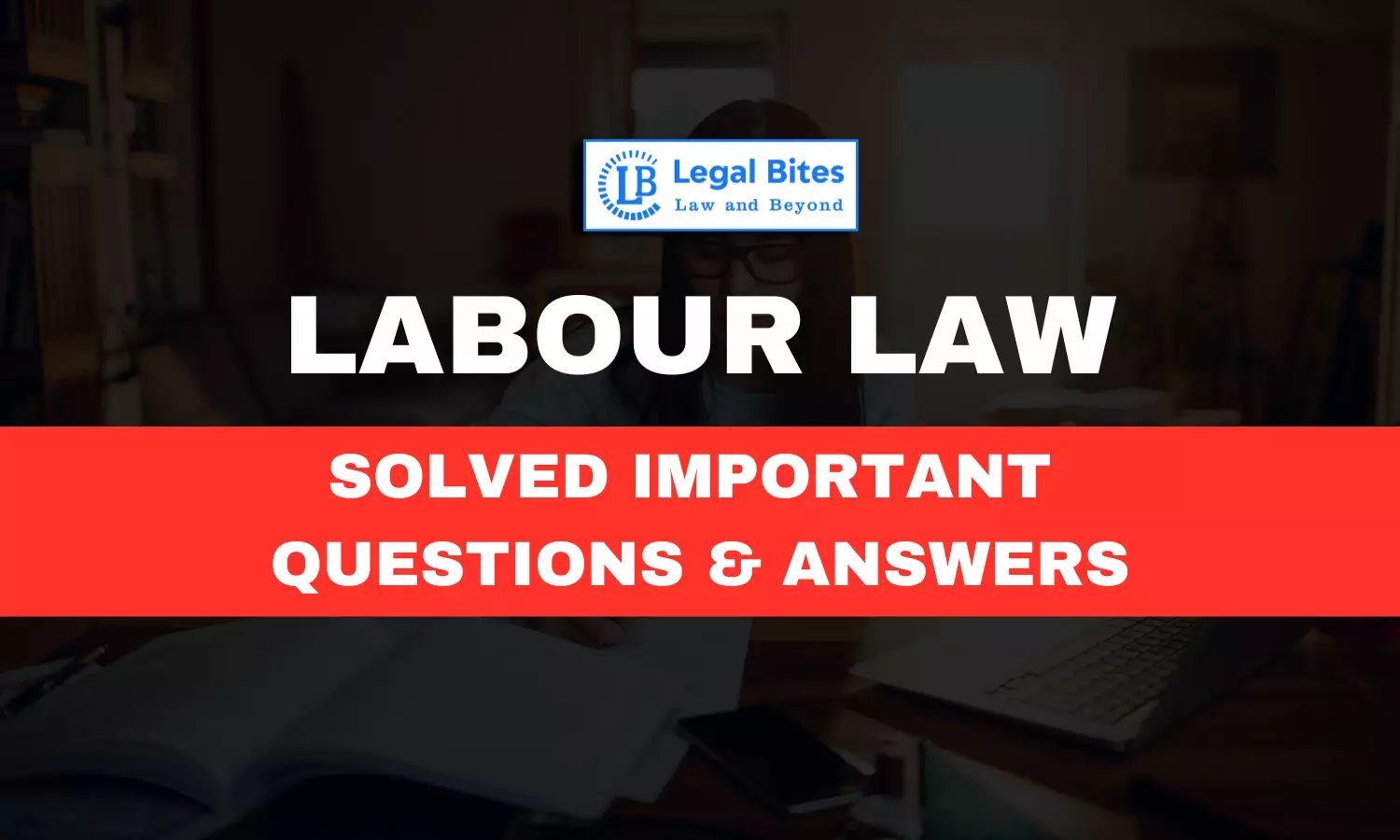Explain the term: Prohibition of Strikes and Lockouts.
Find the question and answer of Labour Law only on Legal Bites.

Question: Explain the term: Prohibition of Strikes and Lockouts.Find the question and answer of Labour Law only on Legal Bites. [Explain the term: Prohibition of Strikes and Lockouts.]AnswerStrike word defines under Section 2(q) of the Industrial Dispute Act, 1947. Strike means stoppage of work by employees of the establishment. In this strike, a large number of workers refuse to do work and come together. In this association of employees or trade unions of the establishment participate in...
Question: Explain the term: Prohibition of Strikes and Lockouts.
Find the question and answer of Labour Law only on Legal Bites. [Explain the term: Prohibition of Strikes and Lockouts.]
Answer
Strike word defines under Section 2(q) of the Industrial Dispute Act, 1947. Strike means stoppage of work by employees of the establishment. In this strike, a large number of workers refuse to do work and come together. In this association of employees or trade unions of the establishment participate in it. In several times situation arises in the strike that the management of establishment is not ready to fulfill the demand of employees. The option of the strike is given by law under the Industrial Dispute Act, 1947. Before this Act, the employee is exploited by employers but when the Act maker sees the situation of employees then they provide the option of the strike to the employees.
Lockout defined under Section 2(l) of Industrial Dispute Act, 1947. Lockout means temporary closure of any establishment or industry. The work of the industry is stoped and there is no worker who is allowed to do work. It doesn’t matter how many workers are working. Just like workers have an option to go on strike to the fulfillment of demands like that employers have an option to go on lockout. But it was not beneficial to employers as well as workers. The lockout was also done when there is an internal disturbance between workers and workers or between workers and management. The reason may be internal or external disturbances both have happened. In the situation of financial crises and political pressure also a reason for lockout. It is not yet simple to declare a lockout. The time of lockout is not simple for management as well as workers.
The Procedure of Strikes and Lockouts:
In Public Utility Service
Section 22 Prohibition of Strikes and Lockouts
a. In the case of an employee
No employee can go on strike in public utility service when there is a breach of contract.
1. If employees want to go on strike then before six months’ notice provided to the employer to show the intension of the strike.
2. After giving notice of six months than within 14 months no employee can go on strike.
3. After the expiry of six months then employees are going on strike.
4. If conciliation proceeding is pending then strike is not possible and after seven days of concluding the proceeding, no strike has happened.
b. In case of an employer
No employer can declare lockout in public utility service.
1. If employers want to go on lockout then before six months notice is given to employees.
2. After giving notice fourteen days no employer can go on lockout.
3. After the expiry period of six months, employers can do a lockout.
4. If conciliation proceeding is pending no employer can go on strike and after seven days of the conclusion of proceeding employers do a lockout.
If there is strike or lockout already in existence then there is no need to send a notice but the employer sends intimation to the authority specified by the appropriate government, notice given to the authority of that particular region or otherwise given in general.
The notice of strike given to any employer in a prescribed format and mentioned the number of employees who participated in the strike. The notice of lockout given to any employee in a prescribed format.
In General Services
General Prohibition of strike and lockout (Section 23)
1. No employer declared lockout in any establishment and workers of establishment also not declared strike when these condition has happened
2. If conciliation proceeding is pending before a Board and after seven days of concluded of the conciliation proceeding.
3. If a proceeding is pending in Labour Court, National Tribunal, Tribunal then no employer and employee can go on lockout or strike. After two months of concluded proceeding also.
4. If a proceeding is pending before arbitration and two months after of conclusion. When the notification is given under sub-section (3-A) of section 10-A then also no strike and lockout can be declared.
5. If the settlement or award is pending then also no one can declare strike and lockout.

Mayank Shekhar
Mayank is an alumnus of the prestigious Faculty of Law, Delhi University. Under his leadership, Legal Bites has been researching and developing resources through blogging, educational resources, competitions, and seminars.
